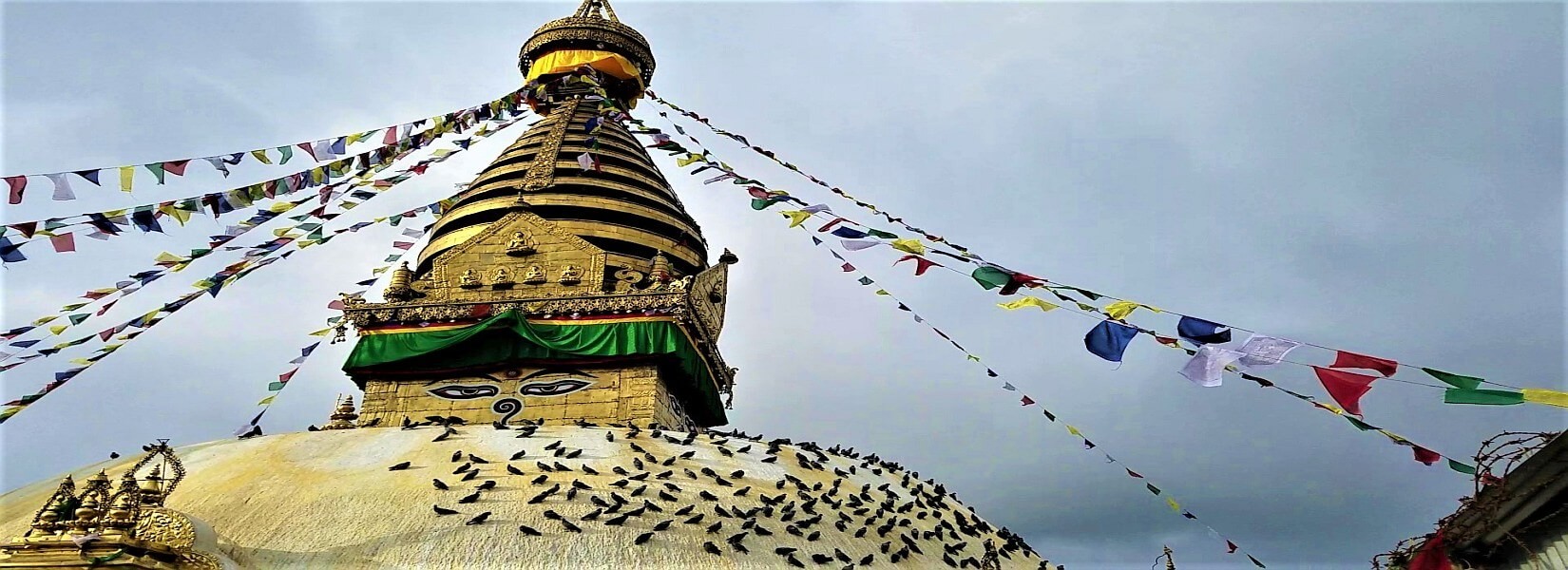Swoyambhunath Temple or Monkey Temple is just 2km walking distance west of the touristic hub Thamel. In this Swoyambhunath temple, visitors can see the biggest stupa of the Buddhist religion, and the Hindu Temple Haratima is located side by side which is the main to see. Besides the Swoyambhunath temple, there are also some other sites is available to see.
History of Swoyambhunath Temple
According to the damaged stone writing found on the site, it was believed that about the beginning of the 5th century CE the great grand Father of King Manadeva named King Vrsadeva ordered work done in 640 CE. So, this seemed to have been confirmed according to the written manuscript found in the damaged stone on the site. It is also said that Emperor Asoka visited the site in the Third Century BCE and built a temple on the hill which was destroyed again. After that, in May 2010 the temple was completely renovated but again suffered from the earthquake on 25th April 2015. Now it is still under renovation.
Around Swoyambhunath Temple
There are many incredible temples and ritual items surrounding the Swoyambhunath temple which has been donated by different Kings and nobles.
Vajra
The bronze baton-like object at the top of the steps which seems like a heavy size is Vajra. According To the Hindu religion, Vajra is the weapon of the Thunder God Indra. And It is used symbolically by the traditions of Buddhism Hinduism and Jainism as the mantra.
Pratappur And Anantapur
Just on the Right and Left side of the Vajra. There was a tall white Building Bullet shape that is called Pratappur and Anantapur.
Harati Mandir
Below the big stupa, the temple of gold-plated roof is located which is called Harati Mata. This goddess is also known as Ajima in Newari Language and culture. Traditionally, there is a belief that this goddess protects children from various diseases by worshipping her.
Shakyamuni Buddha ( Dipankara Buddha )
When you walk past the chaityas at the back of the Swoyambhunath Stupa Temple there is the tall, large black stone-carved Buddha. So, it is the Shakyamuni Buddha carved from a single stone in the 7th century.
Agnipur
In the northwest corner, there is the Agnipur. In Agnipur, the temple of the ancient fire good is located. This temple relates to burnt offering to heaven.
Nagpur
To the north of the main stupa, there is Nagpur. It is a small tank with a snake deity at the bottom. You can see it when it is not filled with water. Near Nagpur, there is Shree Karma Raj Mahavihar.
Shantipur
On the northwest side of the Swoyambhunath Stupa, there is the plain box-like building that is Shantipur.
According to the legend, a holy man name Shanti Shri who lived in the 5th century has entered there to meditate for 1500 years beneath the temple swearing not to appear until the Kathmandu valley needed.
The Natural History Museum
When you follow down from the car park at the southside of the Swoyambhunath hill you can see the Natural History Museum displaying the collection of birds and shriveled animals.
Buddha Park
As you walk down Back to the Swoyambhunath Temple there is a small sitting area with a big pond where every visitor throws the coin to see their luck. If you walk down along the road, you will get Buddha Park which is newly Built.
